THE new Covid strain first detected in Kent could kill more people in 2021 than the original strain has killed this year, members of Sage have warned.
In a worst case scenario, 118,000 people could die of Covid by the summer, compared to the almost 70,000 for the whole of 2020.

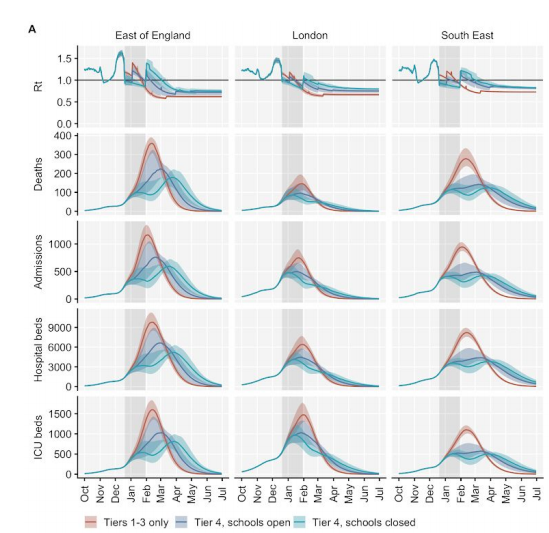
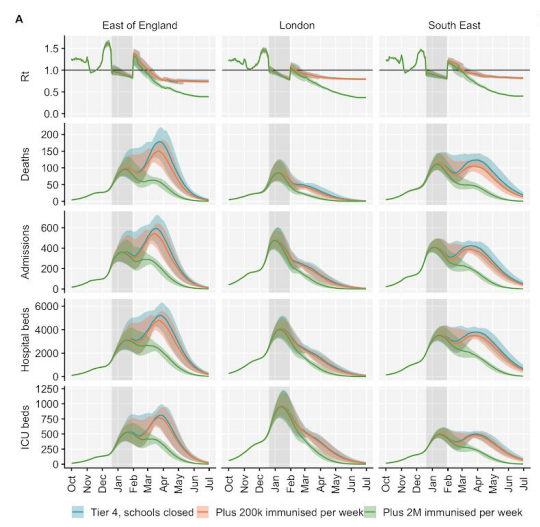
In a more likely scenario, which modelled that 200,000 people were vaccinated every week, a staggering 83,200 could die by July.
The roll-out of the Pfizer jab has reached 520,00 people since December 8 – 260,000 a week.
It was hoped adding vaccines to Britain’s armour against Covid-19 would help slash deaths drastically by Easter, but because this variant is so much more infectious, it means thousands could die before they get their jab.
Scientists have warned the only way to stop the variant causing devastation is to speed up vaccinations urgently, because the current tiered system or lockdown are not strong enough to contain it.
A new Tier 4 was created in response to the “out of control” strain, which ministers were first warned of on December 11.
But because the strain was able to grow in Kent and London during the second lockdown, in November, it suggests the toughest of restrictions are still not robust enough.
Schools and universities must also be shut in order to control this strain, the scientists warned, in another sign the plans for a phased returning of students in January could fall through.
FORECASTING THE STRAIN
The grave warnings come from SPI-M, a sub-group of SAGE which advises the Government on how to manage the pandemic.
SPI-M researchers from the London School of Hygiene and Tropical Medicine modelled spread of the new variant using current data to forecast what will happen next. This is the first time it has been done.
Graphs in the paper published online can be used to look at how each region will be affected.
The team estimate the new strain, technically called B.1.1.7, is 56 per cent more transmissible – less than the 70 per cent figure originally produced – than pre-existing variants.
There is no “clear evidence” that it causes more severe disease. However, because it spreads faster, this inevitably means more cases, more hospitalisations, and then more deaths.

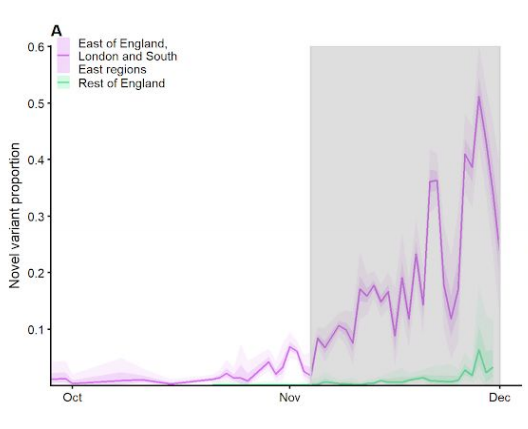
Between now and the end of June, a further 118,000 deaths could occur with only a three-tiered system.
With the addition of Tier 4 across the whole of England until the end of January, including education closures, this could be slashed to 107,000, which is still 40,000 more than in 2020.
By Boxing day 43 per cent of England will be in Tier 4, but there have been calls for it to be used nationwide.
The team wrote: “The increase in transmissibility is likely to lead to a large increase in incidence, with Covid-19 hospitalisations and deaths projected to reach higher levels in 2021 than were observed in 2020, even if regional tiered restrictions implemented before 19 December are
maintained.”
The modelling also shows that the national lockdown in November, in which schools were allowed to remain open, is “unlikely to reduce the R below 1”.
The R number gives an indication of how quickly the outbreak is growing. If it is above 1, it means cases are growing, rather than reducing.
Vaccines have the power
The best case scenario found that deaths could reach 35,700 by June.
But this would require the whole of the UK to lockdown – including schools – and two million people to be vaccinated every week.
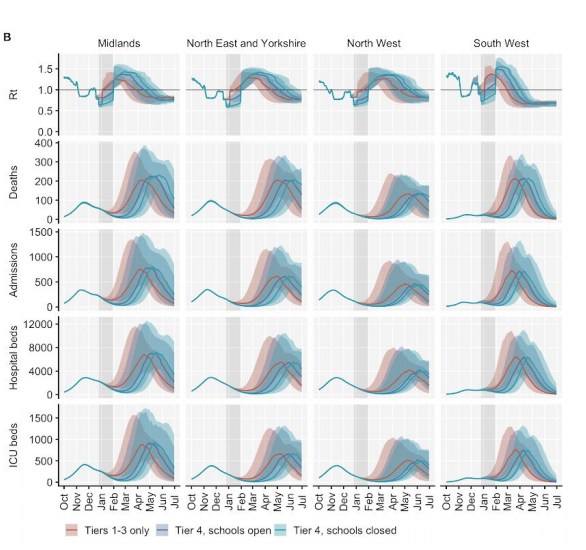
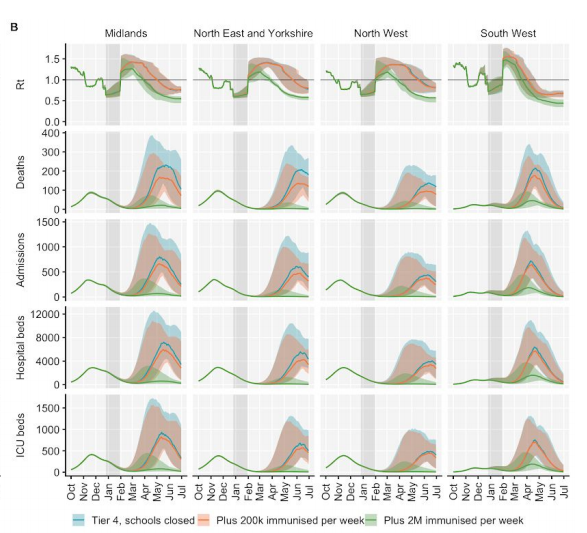
The Government has a target of reaching one million a week once the vaccine programme is in full swing. It is currently reaching a quarter of that target.
In another lockdown scenario, the team said if 200,000 were vaccinated each week, around 83,300 people would die.
It paints a staggering picture of the lengths ministers will need to go to in order to manage this new strain.
The approval of the Pfizer vaccine was seen as the route to normality, with NHS bosses expecting most vulnerable people to be fully protected by April.
But with the emergence of the new variant, it could mean some at-risk people die waiting for their jab.
The Oxford jab is on the horizon, with 100 million doses secured by the UK Government as soon as it is given regulatory approval.
But even though the trials showed the Oxford vaccine is safe and effective, it is not guaranteed the MHRA will approve it. A decision is expected before the end of the year.
Tiered system “not enough”
It comes after the Health Secretary Matt Hancock said the three tiered system was not enough to control this new strain.
At last night’s Downing Street briefing, he said: “Just as we had got a tiered system in place that was able to control this virus we have discovered a new, more contagious virus – a variant that is spreading at a dangerous rate.
“We know that Tier 3 is not enough to control the new variant. This is not our hypothesis, it is a fact and we have seen it on the ground.”
Graphs presented at the briefing showed that during the November lockdown, the new strain was able to grow in numbers in the Kent area, even though the original strain was declining.
This shows that the lockdown was not enough to keep the strain from spreading because it is better at infecting people.
And the Health Secretary Matt Hancock admitted it was “out of control” and cases in the South East had “absolutely rocketed”.
The new strain is already “everywhere” in the UK, Sir Patrick Vallance, the Chief Scientific Adviser has said.
Did you miss our previous article...
https://trendinginthenews.com/covid-19/amanda-kloots-reveals-shes-turned-her-late-husband-nick-corderos-ashes-into-a-ring-so-hes-with-her






